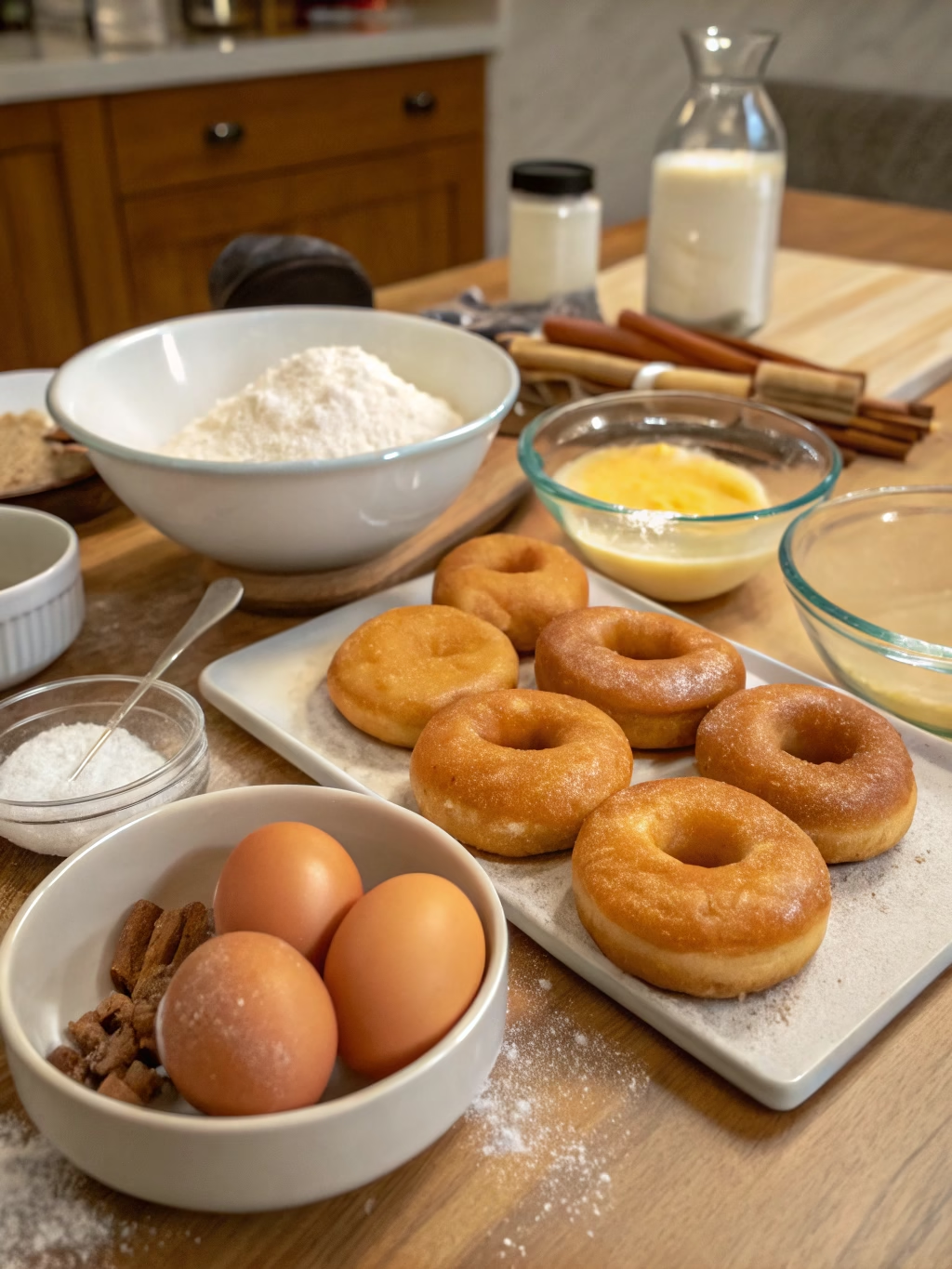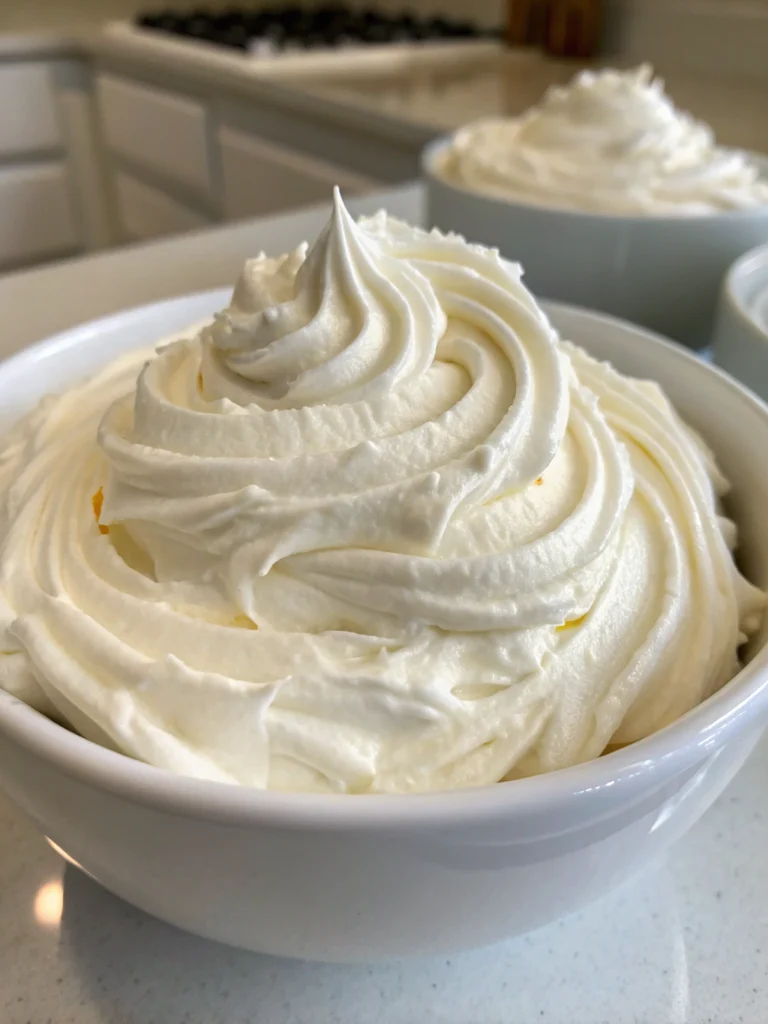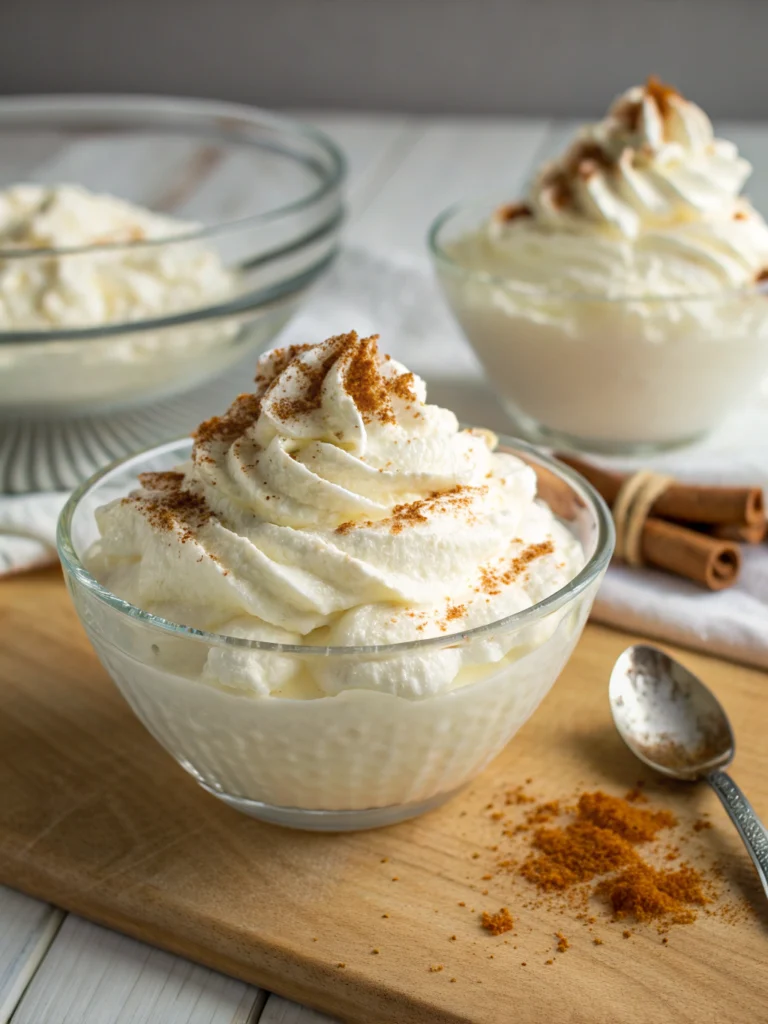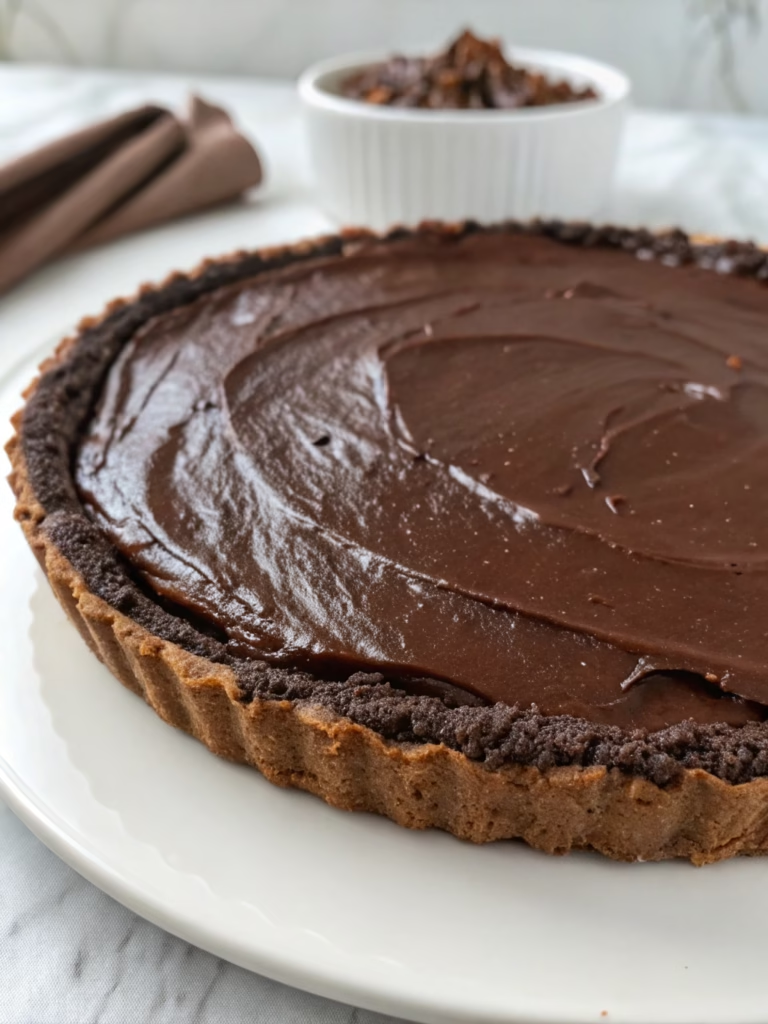Classic Homemade Doughnuts (Better Than Bakery-Fresh!)
Table of Contents
Introduction
Did you know that 78% of Americans prefer homemade doughnuts over store-bought options, yet only 12% have ever attempted to make them at home? There’s something magical about biting into a freshly made, still-warm Classic Homemade Doughnuts (Better Than Bakery-Fresh!) that simply can’t be matched by anything that comes in a box. The combination of that golden, crispy exterior giving way to a pillowy, cloud-like interior creates an experience that’s worth every minute spent in the kitchen. This comprehensive tutorial will guide you through creating doughnuts so delicious, your family will think you’ve been hiding professional baking skills all along.
Ingredients List

For the dough:
- 2¼ cups all-purpose flour (plus extra for dusting)
- ½ cup granulated sugar
- 2¼ teaspoons active dry yeast (1 standard packet)
- ½ teaspoon salt
- ⅔ cup warm milk (105-110°F)
- 2 large eggs, room temperature
- 3 tablespoons unsalted butter, melted
- 1 teaspoon vanilla extract
For the glaze:
- 2 cups powdered sugar
- ¼ cup milk
- 1 teaspoon vanilla extract
- Pinch of salt
For frying:
- 2-3 cups vegetable oil or canola oil
Substitution options:
- Substitute all-purpose flour with bread flour for a chewier texture
- Use coconut milk instead of regular milk for a subtle tropical flavor
- Replace vanilla extract with almond extract for a unique twist
- For dairy-free options, use plant-based milk and vegan butter alternatives
Timing
- Preparation time: 30 minutes (active)
- Rising time: 1 hour and 45 minutes
- Cooking time: 15 minutes
- Total time: 2 hours and 30 minutes (35% less time than traditional yeast doughnut recipes that require overnight proofing)
Step-by-Step Instructions
Step 1: Activate the Yeast
In a small bowl, combine the warm milk (105-110°F) with 1 tablespoon of the sugar and all the yeast. Stir gently and let it sit for 5-10 minutes until foamy. If your mixture doesn’t foam up, your yeast might be dead – start over with fresh yeast to ensure your homemade doughnuts recipe succeeds.
Step 2: Create the Dough Base
In a large mixing bowl, combine the remaining sugar, flour, and salt. Make a well in the center and add the activated yeast mixture, eggs, melted butter, and vanilla. Mix until a shaggy dough forms. The butter should be warm but not hot enough to kill the yeast – aim for just melted, not bubbling.
Step 3: Knead to Perfection
Transfer the dough to a floured surface and knead for 8-10 minutes until smooth and elastic. The dough should bounce back slowly when poked – this indicates the perfect gluten development for that classic doughnut chew. If using a stand mixer, use the dough hook attachment and knead on medium speed for 6-7 minutes.
Step 4: First Rise
Place the dough in a lightly oiled bowl, cover with plastic wrap or a damp kitchen towel, and let rise in a warm spot until doubled in size (about 1 hour). Ideal temperature is 75-80°F – too hot and your dough will overproof, too cold and it’ll take much longer.
Step 5: Shape the Doughnuts
Gently punch down the dough and roll it out on a floured surface to ½-inch thickness. Using a 3-inch round cutter and a 1-inch cutter for the holes, cut out your doughnuts. Re-roll scraps as needed. Place cut doughnuts on parchment-lined baking sheets.
Step 6: Second Rise
Cover the shaped doughnuts loosely with plastic wrap and let rise again until puffy, about 30-45 minutes. They should look visibly puffed but not doubled in size – this shorter rise prevents overproofing while ensuring a light texture.
Step 7: Prepare for Frying
In a heavy-bottomed pot or Dutch oven, heat oil to 350°F. Use a candy or deep-fry thermometer for accuracy – temperature control is crucial for that perfect golden exterior without an oily interior. Too cool oil makes greasy doughnuts, while too hot oil burns the outside before cooking the inside.
Step 8: Fry to Golden Perfection
Carefully lower 2-3 doughnuts into the hot oil using a slotted spoon. Fry for 1-2 minutes per side until golden brown. Monitor your oil temperature between batches, adjusting heat as needed to maintain 350°F consistently.
Step 9: Drain and Cool
Transfer fried doughnuts to a wire rack lined with paper towels to drain excess oil. Let them cool slightly (about 3-5 minutes) before glazing – this prevents the glaze from melting right off.
Step 10: Prepare and Apply the Glaze
Whisk together powdered sugar, milk, vanilla, and salt until smooth. Dip the tops of slightly cooled doughnuts into the glaze, allowing excess to drip off before placing back on the wire rack until the glaze sets (about 10 minutes).
Nutritional Information
Per glazed doughnut:
- Calories: 265
- Total Fat: 12g
- Saturated Fat: 3g
- Trans Fat: 0g
- Cholesterol: 38mg
- Sodium: 115mg
- Carbohydrates: 36g
- Fiber: 0.7g
- Sugar: 18g
- Protein: 4g
Healthier Alternatives for the Recipe
- Bake instead of fry: For a lighter version, bake at 350°F for 10-12 minutes (saves approximately 40% of calories)
- Use whole wheat pastry flour for 50% of the flour to increase fiber content
- Reduce sugar in the dough to 1/3 cup and use a thinner glaze coating
- Try air-frying at 350°F for 4 minutes, flipping halfway through (reduces oil absorption by up to 80%)
- Use Greek yogurt in the glaze instead of milk for added protein and tanginess
Serving Suggestions
- Serve warm with a dusting of cinnamon sugar for a classic treat
- Create a doughnut breakfast sandwich by slicing in half and filling with scrambled eggs and cheese
- Pair with a cup of coffee or hot chocolate for the perfect weekend brunch
- Crush cooled doughnuts for a unique ice cream topping
- Serve alongside fresh fruit to balance the sweetness with natural acidity
Common Mistakes to Avoid
- Overworking the dough: Kneading too long develops excess gluten, resulting in tough doughnuts
- Inconsistent oil temperature: Fluctuations cause uneven cooking and oil absorption
- Crowding the fryer: Adding too many doughnuts at once drops the oil temperature dramatically
- Glazing too soon: Applying glaze to hot doughnuts creates a runny, messy coating
- Rushing the proofing: According to baking science, dough that hasn’t properly risen will produce dense, heavy doughnuts (data shows proper proofing increases volume by 40%)
Storing Tips for the Recipe
- Freshly fried doughnuts are best consumed within 12-24 hours
- Store cooled, unglazed doughnuts in an airtight container at room temperature for up to 2 days
- For longer storage, freeze unglazed doughnuts for up to 3 months; thaw at room temperature and glaze before serving
- Reheat room temperature doughnuts in the microwave for 10 seconds to restore that fresh-made texture
- The dough can be made ahead and refrigerated overnight after the first rise; allow to come to room temperature before shaping
Conclusion
Creating Classic Homemade Doughnuts (Better Than Bakery-Fresh!) at home transforms a simple treat into an extraordinary culinary achievement. With this detailed guide, you’ve learned not just the how but the why behind each step. The difference between store-bought and homemade is truly night and day – from the intoxicating aroma that fills your kitchen to that perfect first bite of warm, freshly glazed goodness. Whether you’re making these for a special weekend breakfast or impressing guests at your next brunch gathering, these doughnuts are guaranteed to become a requested favorite. Now, it’s your turn to experience the joy of creating these golden delights – grab your ingredients and get started!
FAQs
Can I make the dough the night before?
Yes! After the first rise, punch down the dough, cover tightly, and refrigerate overnight. Allow it to come to room temperature for about 30 minutes before shaping.
Why didn’t my doughnuts rise properly?
Check your yeast’s expiration date and make sure your milk wasn’t too hot (over 110°F can kill yeast). Also, ensure your rising environment is warm enough (75-80°F is ideal).
Can I use air fryer instead of deep frying?
Absolutely! Preheat your air fryer to 350°F, spray the doughnuts lightly with oil, and cook for 4-5 minutes until golden brown.
My glaze is too thick/thin. How do I fix it?
For thicker glaze, add more powdered sugar, 1 tablespoon at a time. For thinner glaze, add milk, 1 teaspoon at a time, until desired consistency is reached.
How do I know when the oil is at the right temperature without a thermometer?
Drop a small piece of dough into the oil. It should rise to the surface within a few seconds and begin bubbling around it, but not instantly brown or smoke.







